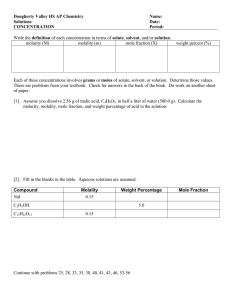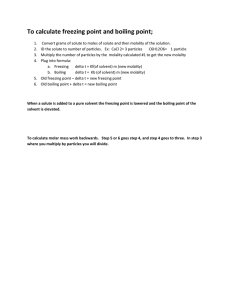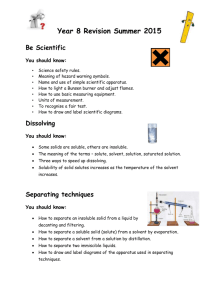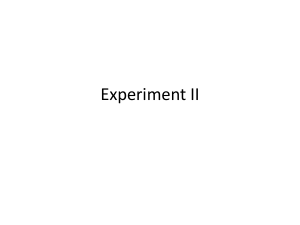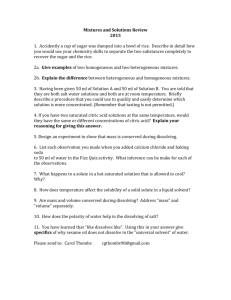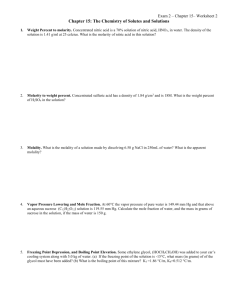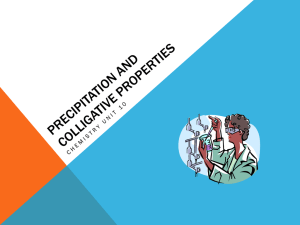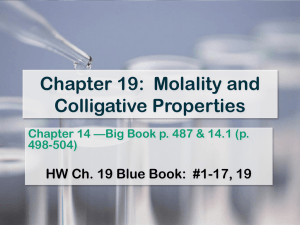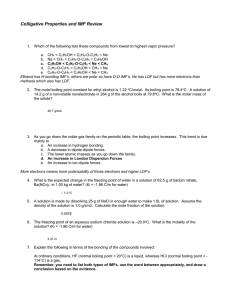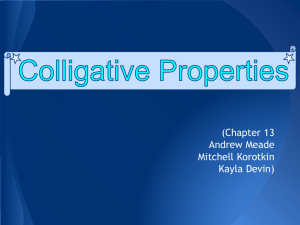chapter12attempt1
advertisement
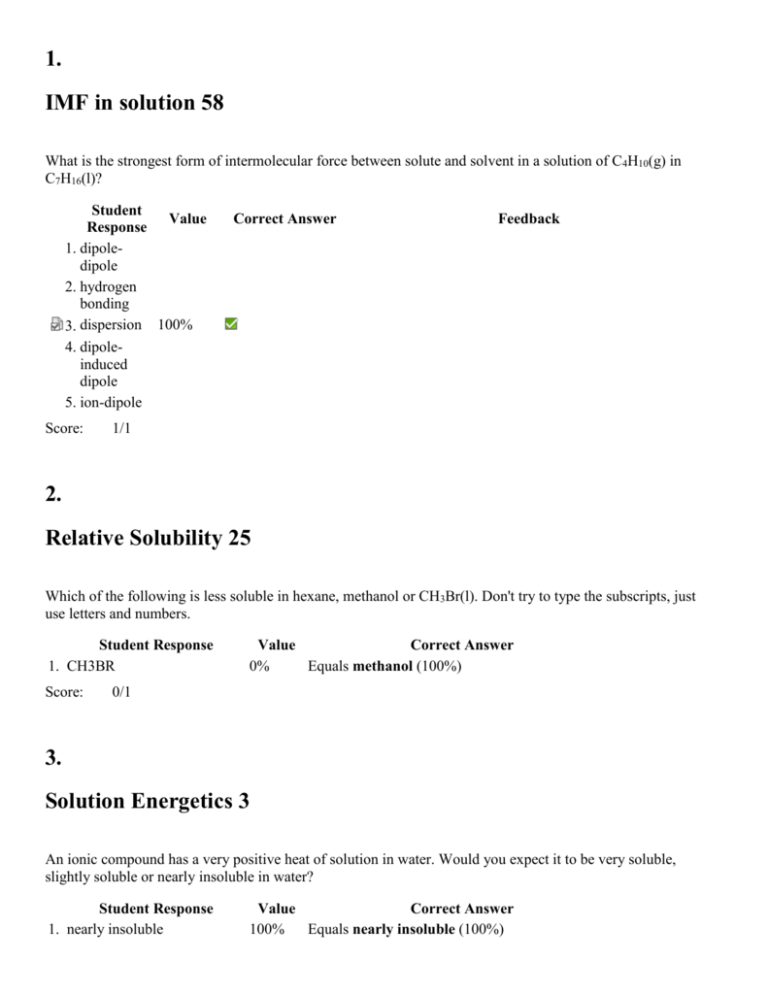
1.
IMF in solution 58
What is the strongest form of intermolecular force between solute and solvent in a solution of C4H10(g) in
C7H16(l)?
Student
Value
Response
1. dipoledipole
2. hydrogen
bonding
3. dispersion 100%
4. dipoleinduced
dipole
5. ion-dipole
Score:
Correct Answer
Feedback
1/1
2.
Relative Solubility 25
Which of the following is less soluble in hexane, methanol or CH3Br(l). Don't try to type the subscripts, just
use letters and numbers.
Student Response
1. CH3BR
Score:
Value
Correct Answer
0%
Equals methanol (100%)
0/1
3.
Solution Energetics 3
An ionic compound has a very positive heat of solution in water. Would you expect it to be very soluble,
slightly soluble or nearly insoluble in water?
Student Response
1. nearly insoluble
Value
Correct Answer
100%
Equals nearly insoluble (100%)
Score:
1/1
4.
Gas Solubility 1
Which of the following sets of changes would definitely result an originally saturated solution of O2(g) in
H2O(l) becoming unsaturated WITHOUT removing oxygen?
Student
Value
Response
1. decrease
pressure,
decrease
temperature
2. increase
pressure,
decrease
temperature
3. increase
pressure,
increase
temperature
0%
4. decrease
pressure,
increase
temperature
Score:
Correct Answer
Feedback
0/1
5.
Chapter 8 Molality 7
Determine the molality of a solution prepared by dissolving 7.18 g of cycloheptane in 56.6 g of benzene.
Student Response Value
100% 1.29
Answer: 1.29
Score:
6.
1/1
Correct Answer
Chapter 8 PC to molal 2
A 2.76 mass % aqueous solution of ethylene glycol (HOCH2CH2OH) has a density of 1.08 g/mL. Calculate
the molality of the solution.
Student Response Value
100% 0.46
Answer: .4576
Score:
Correct Answer
1/1
7.
Ionic Dissociation Calculation 7
How many moles of solute particles are present in 1.47 mL of 0.604 M Na2SO4? Use scientific notation with
3 significant figures!!!!
Student Response Value
Correct Answer
0%
2.66E-3 (2.66 × 10-3)
Answer: 2.7e-3
Score:
0/1
8.
Boiling Point Comparison 2
Which of the following solutions will have the highest boiling point? Input the appropriate letter.
A. 35.0 g of C2H6O2 in 250.0 g of ethanol (C2H5OH)
B. 35.0 g of C3H8O in 250.0 g of ethanol (C2H5OH)
C. 35.0 g of C4H10O in 250.0 g of ethanol (C2H5OH)
Student Response
1. c
Score:
0/1
9.
Chapter 8 VP 6
Value
Correct Answer
0%
Equals B (100%)
Calculate the vapor pressure (in torr) at 293 K in a solution prepared by dissolving 17.8 g of the non-volatile
non-electrolye glucose in 183 g of water. The vapor pressure of water at 293 K is 17.54 torr.
Student Response Value
100% 17.37
Answer: 17.3646
Score:
Correct Answer
1/1
10.
Chapter 8 FP 15
Calculate the freezing point (in degrees C) of a solution made by dissolving 4.05 g of anthracene {C14H10} in
94.0 g of CCl4. The Kfp of the solvent is 29.8 K/m and the normal freezing point is -23 degrees C.
Student Response Value
0%
-30.21
Answer: 242.8
Score:
Correct Answer
0/1
11.
Chapter 8 MM bp 6
When 5.3 g of an unknown non-electrolyte is dissolved in 50.0 g of water, the boiling point increased to
100.689 degrees C from 100 degrees C. If the Kbp of the solvent is 0.512 K/m, calculate the molar mass of the
unknown solute.
Student Response Value
100% 79
Answer: 78.76
Score:
Correct Answer
1/1
12.
MM Osmotic Pressure 3
When 0.301 grams of a polymer were dissolved in 17.3 mL of benzene at 26.1 degrees C, the osmotic
pressure was found to be 0.058 atm. Calculate the molar mass of the protein.
Student Response Value
0%
7,366
Answer: 736.596
Correct Answer
Score:
0/1
